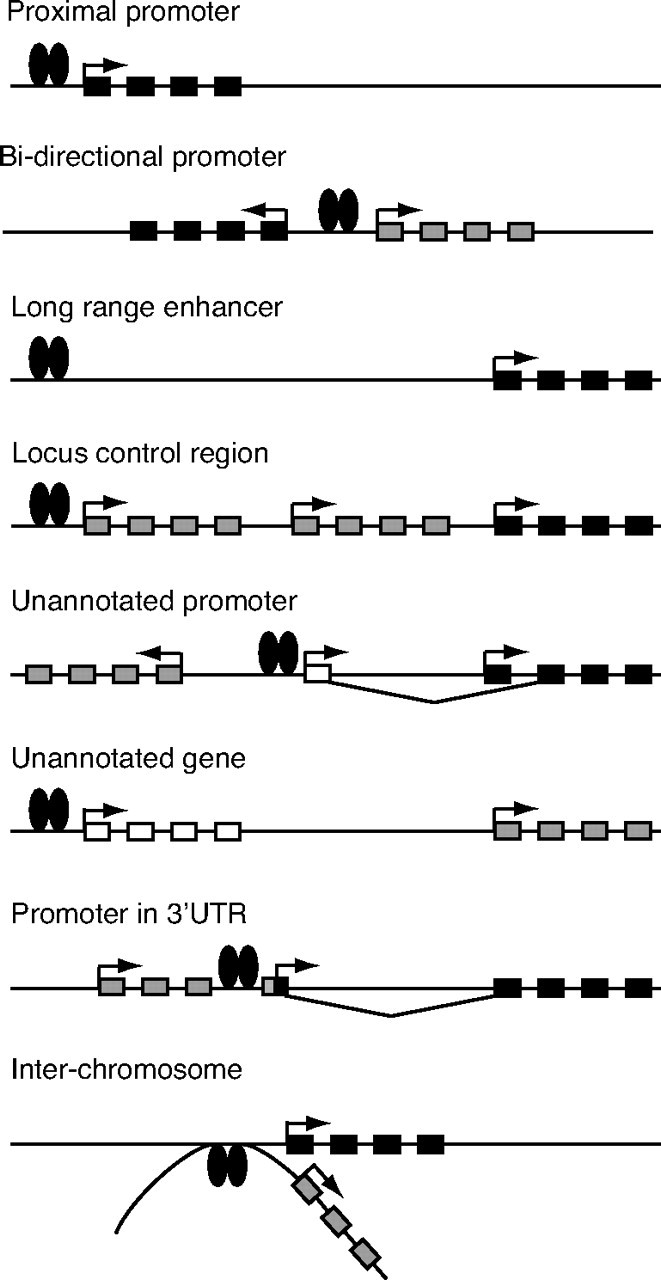Fig. 1.

Transcriptome Complexity and Assignment of Binding Sites to Target Genes
Binding sites for nuclear receptors identified by ChIP-based experiments are usually assigned to the nearest annotated gene. Binding sites located in proximal promoter regions can be assigned with high confidence to the associated gene, although specific regulation of one gene over another in transcriptional units sharing a bidirectional promoter is possible. Unambiguous assignment of a target gene to a binding site located far away from its TSS requires the use of the 3C technology. A locus control region can regulate the expression of an individual gene within a cluster in a spatiotemporal manner. Binding sites located far away from a known gene could actually be close to an unannotated promoter or in the vicinity of an unknown gene. A significant number of promoters have been found in the 3′-untranslated region of another gene. Finally, a binding site located on one chromosome can be used to bring a transcription factor close to a gene located on another chromosome. A gene in black represents the actual target of the nuclear receptor bound to a proximal or distal site; a gene in gray indicates the annotated gene nearest to a binding site but may not be the actual target of the receptor; a gene in white denotes the presence of an unannotated gene. UTR, Untranslated region.
